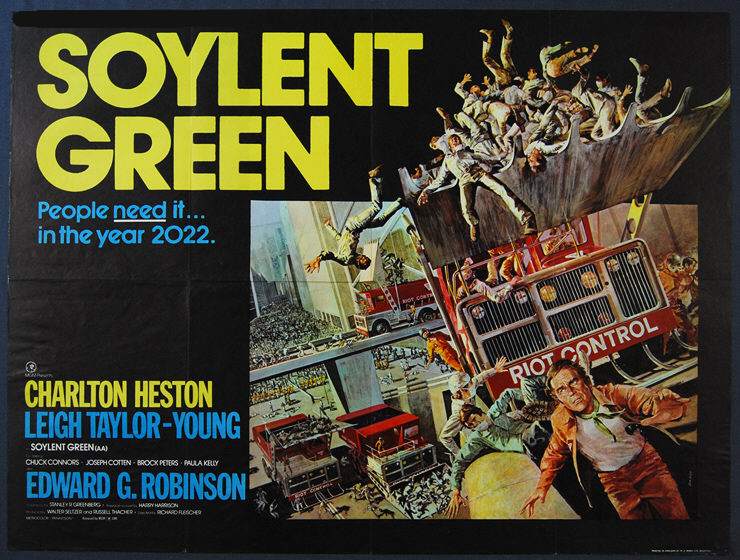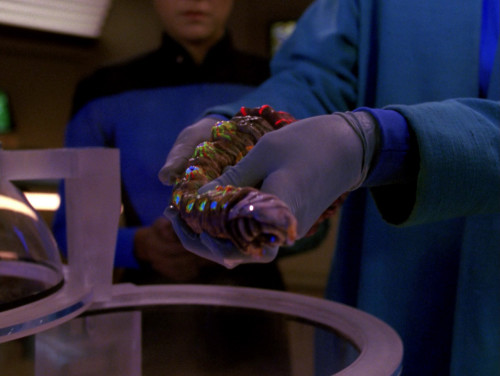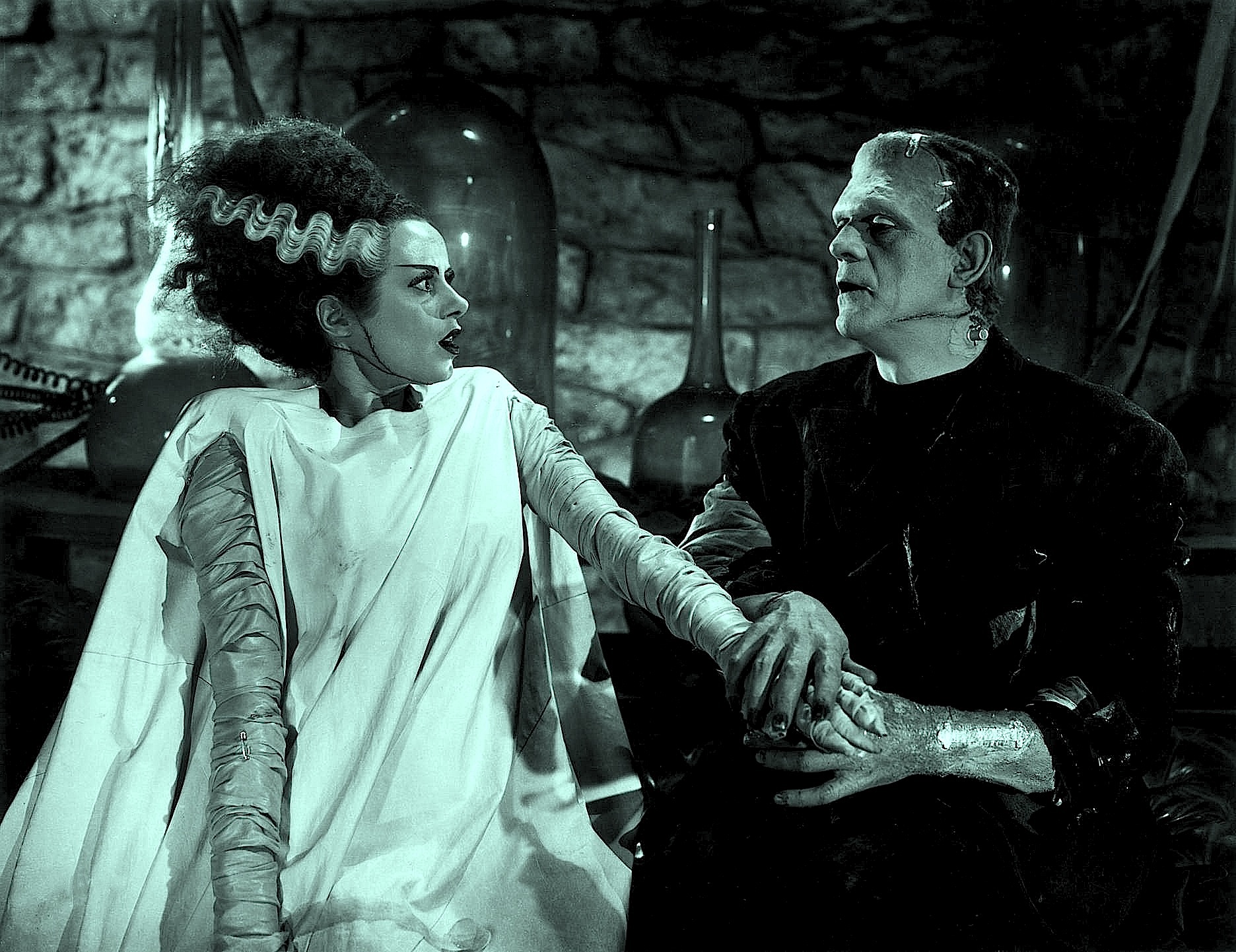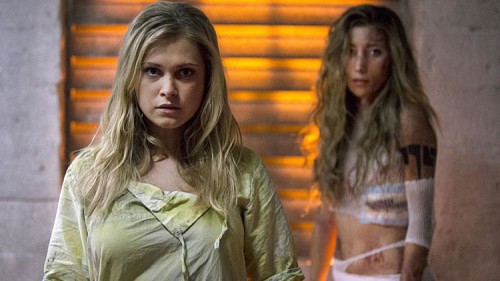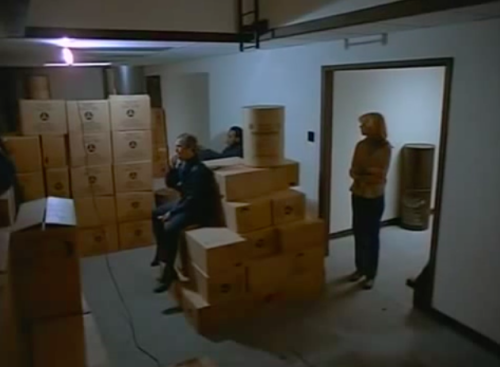This is a guest post by Maria Ramos.
Trigger warning: discussion of rape and sexual assault
Soylent Green, Richard Fleischer‘s 1973 classic sci-fi film, makes huge statements about class division, overpopulation, and global warming. Many have drawn parallels between the future depicted in the movie — where the greenhouse effect has taken its toll and much of the world’s wildlife is extinct — to the course of environmental destruction that humanity is currently on in the real world. While the movie’s message about the environment is much needed, its treatment of women makes an even bigger statement.
The dystopian future shown in Soylent Green is downright miserable for everyone but a handful of people — the lucky few aren’t actually seen in the film, but are noted as living away from the chaos of the city in heavily guarded country estates. The movie’s opener lists the population of New York City in the year 2022 at 40 million. Charlton Heston‘s character, Detective Frank Thorn, can’t go to or from his dilapidated apartment without seeing throngs of homeless people in the streets while law enforcement disperses crowds with a garbage truck that literally scoops people out of the way. Food is so scarce that folks take to primarily eating soy and lentil blocks — Soylent Red and Soylent Yellow — while the more popular Soylent Green is in short supply. It’s clear that poverty and overpopulation are major themes in Soylent Green, but the biggest victims of this are the women seen in the film.
Soylent Green stays true to the handling of women in the book on which it is based, Harry Harrison‘s Make Room! Make Room!. Several key details, some names, and the ending change, but one thing stays the same: women are screwed from beginning to end, literally and figuratively. Few women in the film get a break, not the poor or the ones who are “lucky” enough to have access to real food and a place to stay. The latter are actually referred to as “furniture,” and they’re basically attractive women who come as a package deal with the upscale apartments being rented out. A Craigslist ad for such an apartment might read, “Condo comes with a refrigerator, dishwasher, 23-year-old, slim, blonde furniture, and access to a concierge.”
Just like a chair or a hat rack, the women who are considered “furniture” don’t get to choose who uses them and must obey men’s commands, including visitors off the street. They’re routinely subjected to rape, violence and abuse from their renters and any men with whom they come in contact. Leigh Taylor-Young plays the film’s female lead, Shirl, who is at the mercy of the men who rent out the apartment where she lives. She sees her fellow “furniture” friends being beaten up by the building’s owner. Shirl is told, rather than asked, to have sex with Detective Thorn, and has very little control over her own destiny. She displays no anger at her condition and has clearly accepted her lot in life, as have the other women in the movie.
Aside from the sexist treatment experienced by the “furniture,” other women in Soylent Green are treated as disposable. Homeless women are shown being shot in the streets and in a homeless shelter while simply trying to survive. They are picked up by the scooper trucks while struggling to get food and are left to fend for themselves on the streets as they hover over their children.
While overpopulation is the big problem presented in this film, the solutions are rather absurd. No one in the movie thinks to punish the men who rape women and have stripped them of their reproductive rights, as women have no control over their own fertility and bodies in this world. The society depicted in Soylent Green is an extreme patriarchy, and an incompetent one at that. No women have positions of power and none are depicted as heroes who display courage. The men have all the employment opportunities and men make all of the social, political, and economic decisions.
As the film was released in 1973, a time when more women than ever were claiming their own destinies and demanding equal treatment, Soylent Green didn’t depict women’s place in the real world. However, it makes sense in a dystopian setting where political corruption and social chaos run rampant — history shows that women and children typically get the worst treatment in such situations.
One thing that made Soylent Green such an influential movie is that is seems to depict the possibilities if people continue on at their worst. The political system would become a nightmare, police would become defenders of corporations rather than people, and advocating for the rights of women and protecting nature would become afterthoughts. These are all things that have happened in one way or another, especially when it comes to the environment. As the EPA has reported, human fossil fuel consumption in the U.S. alone is adding between 5,000 to 6,000 million metric tons of CO2 to the atmosphere each year, which is thought to be driving temperatures upward. Global warming and climate change are real, and we’re spurring it on.
But would the country’s young women be forced into accepting rape and degradation if our society slips into mayhem in the future? The film’s female characters seem to have accepted their fates and although they may not be okay with it, they don’t do much to fight against it. Today, women’s voices are constantly silenced, even (and especially) when conversations and arguments are about our own bodies. Although definitely not ideal, a future where patriarchal ideas and control over women’s bodies and rights could be a frightening possibility, as seen in the debates around abortion in current political headlines. As for the homeless women being trampled and shot in the streets, that could definitely happen to a significant portion of the female population, especially as violence like this does happen now, particularly to Black women. If we ever see social unrest like that in Soylent Green, women’s rights and social justice would deteriorate as people struggle to survive and men fight to keep their power.
Instead of being outraged at how dreadfully Soylent Green treats women, let’s take it as a forewarning and a lesson. We should think of what we can do to secure the future of women in our society if we ever get to a point where our civil liberties and legal protections are gone. We can either be proactive now, or resign to a life of furniture-like serfdom later.
Maria Ramos is a writer interested in comic books, cycling, and horror films. Her hobbies include cooking, doodling, and finding local shops around the city. She currently lives in Chicago with her two pet turtles, Franklin and Roy. You can follow her on Twitter @MariaRamos1889.
